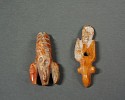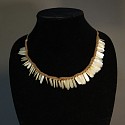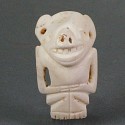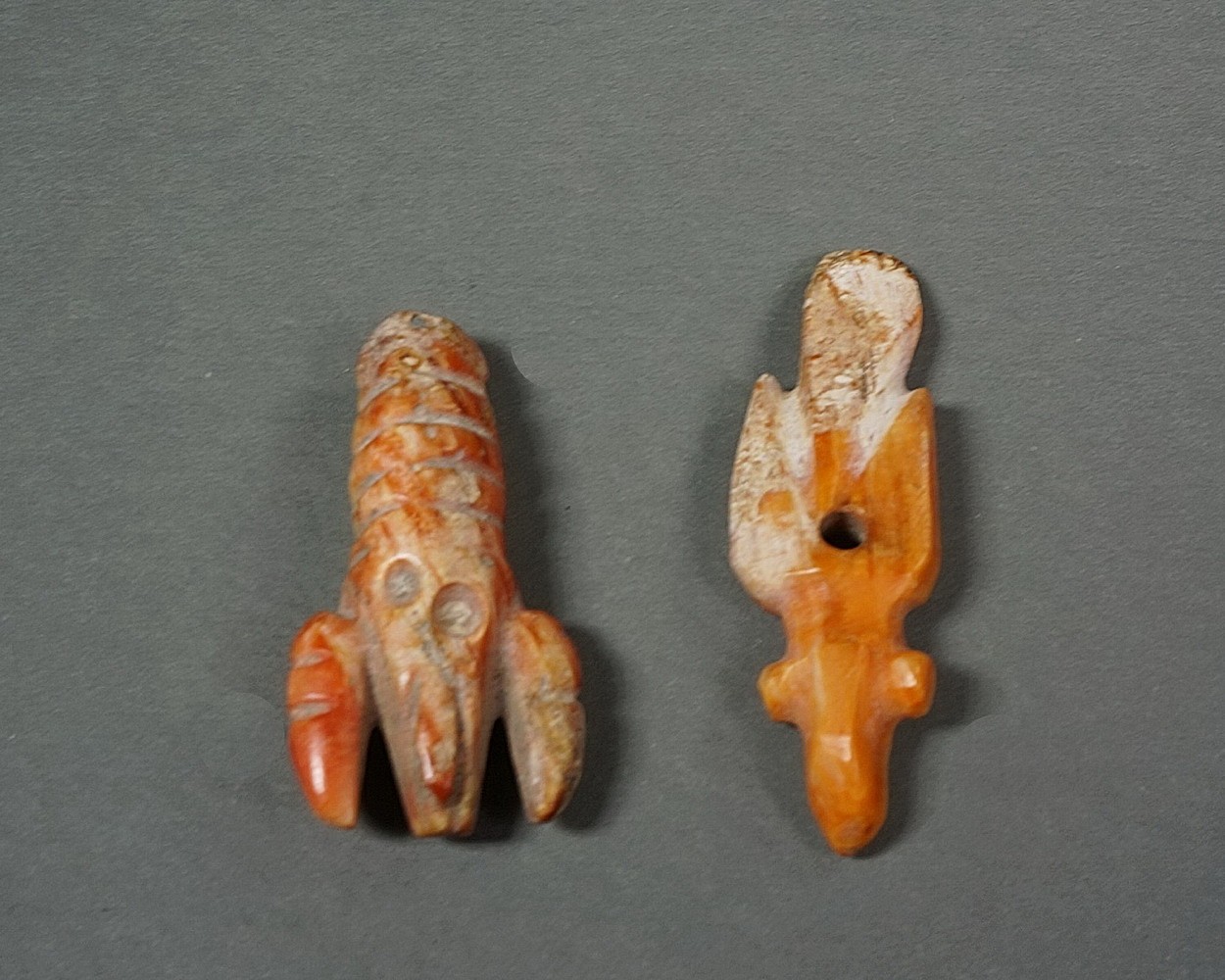




Peru, Chimu Carved Crayfish and Bird Pendants Carved from Spondylus Shells
The pendant on the left depicts a crayfish, while the one on the right represents a marine bird. Crayfish are found in the fresh water rivers along the Peruvian coast. Both pendants have suspension holes for attachment to a bracelet or necklace. Best seen from above, the bird has protruding eyes and a long tail. Both items are the types of Spondylus artifacts that are found on Peruvian North Coast Capa Pacha (child sacrifice ceremony). This is in discussed in PYRAMIDS OF TUCUME- The quest frof the Peru's Forgotten City by Thor Hyerdahl and Daniel Sandweisspg,106-112
Media: Shell
Dimensions: Crayfish Length: 1 3/8"
Bird Length: 1 1/2"
$1,250
N7002
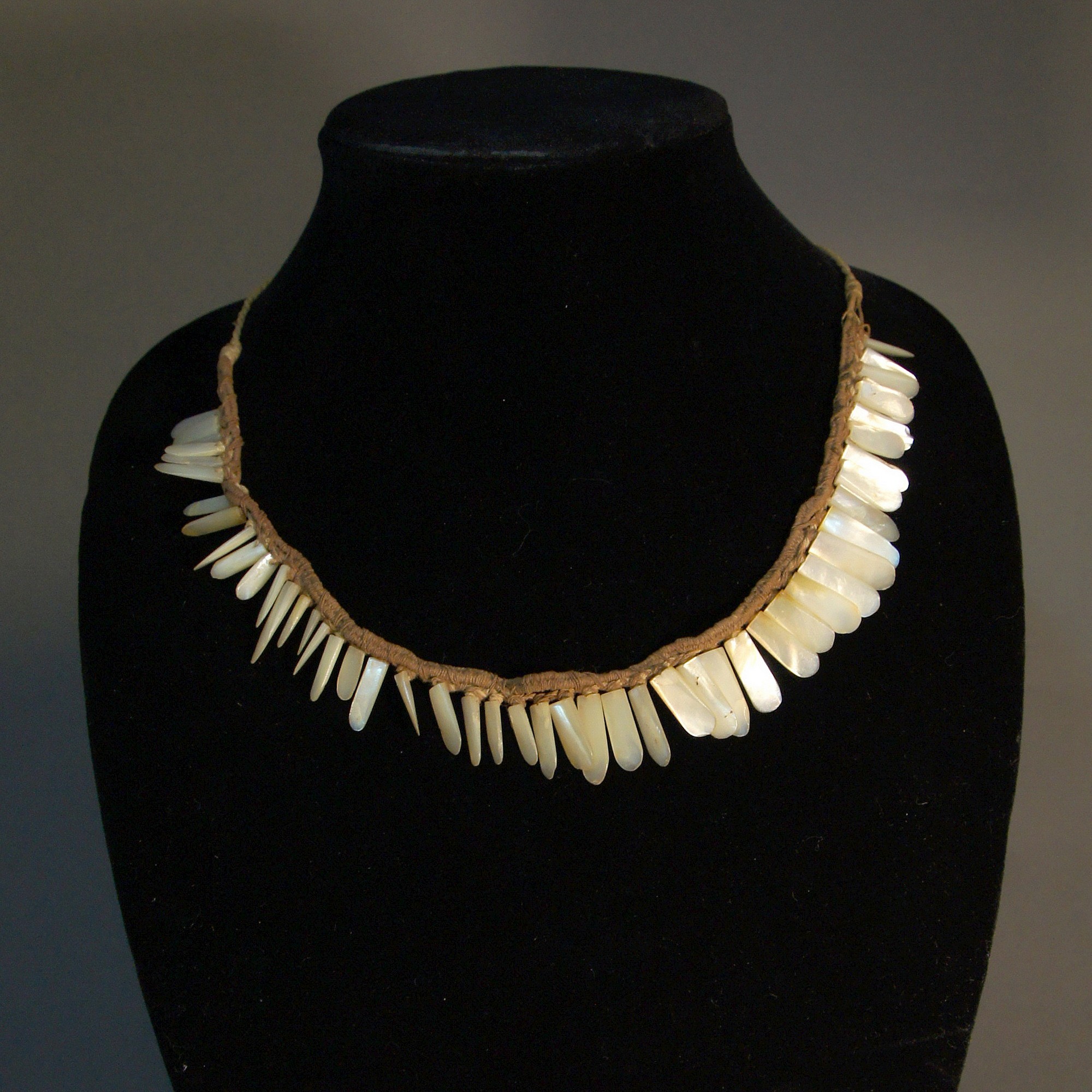
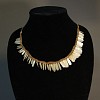




Peru, Chimú Necklace of Mother of Pearl on Original Cotton Line
There are 50 matched mother-of-pearl elements each with a single suspension hole starting at the top and exiting from the side and sewn on a continuous strand around a double cotton cord. Similar mother-of-pearl tab shaped beads are on a pectoral in the American Museum of Natural History and illustrated in THE INKA EMPIRE AND ITS ANDEAN ORIGINS by Craig Morris, pl 131.
$2,800
m7148
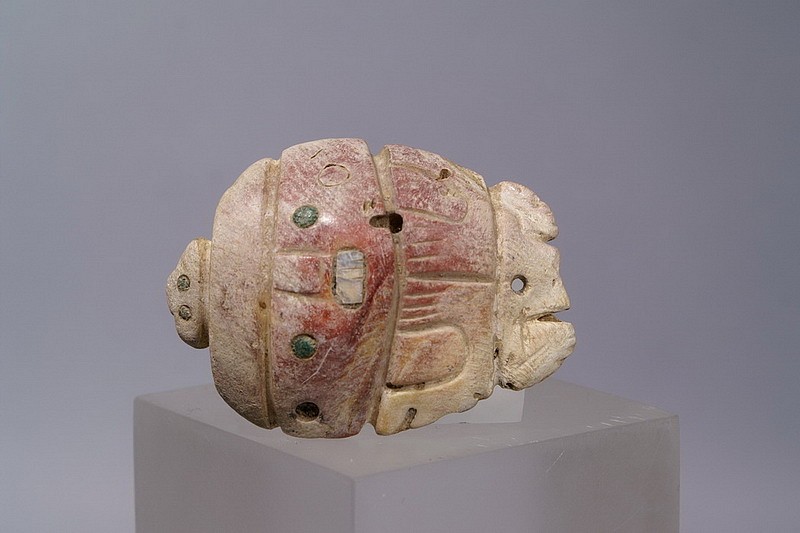


Peru, Chimu Shell Turtle Pendant
This turtle head and carapace have inlays of turquoise and mother of pearl. This is an unusually large shell, carved with double imagery. A human figure appears on the carapace when the pendant is vertical. When horizontal, the shell appears as a turtle, with a small head at the top, and tail and rear flippers at the bottom. From a Private New York collector prior to 1980's. Published in Ocean Fishing in Pre-Columbian Chile and Peru, plate 60.
Media: Shell
Dimensions: Height: 3" inches
Condition: As found with original inlays.
$2,900
M8027
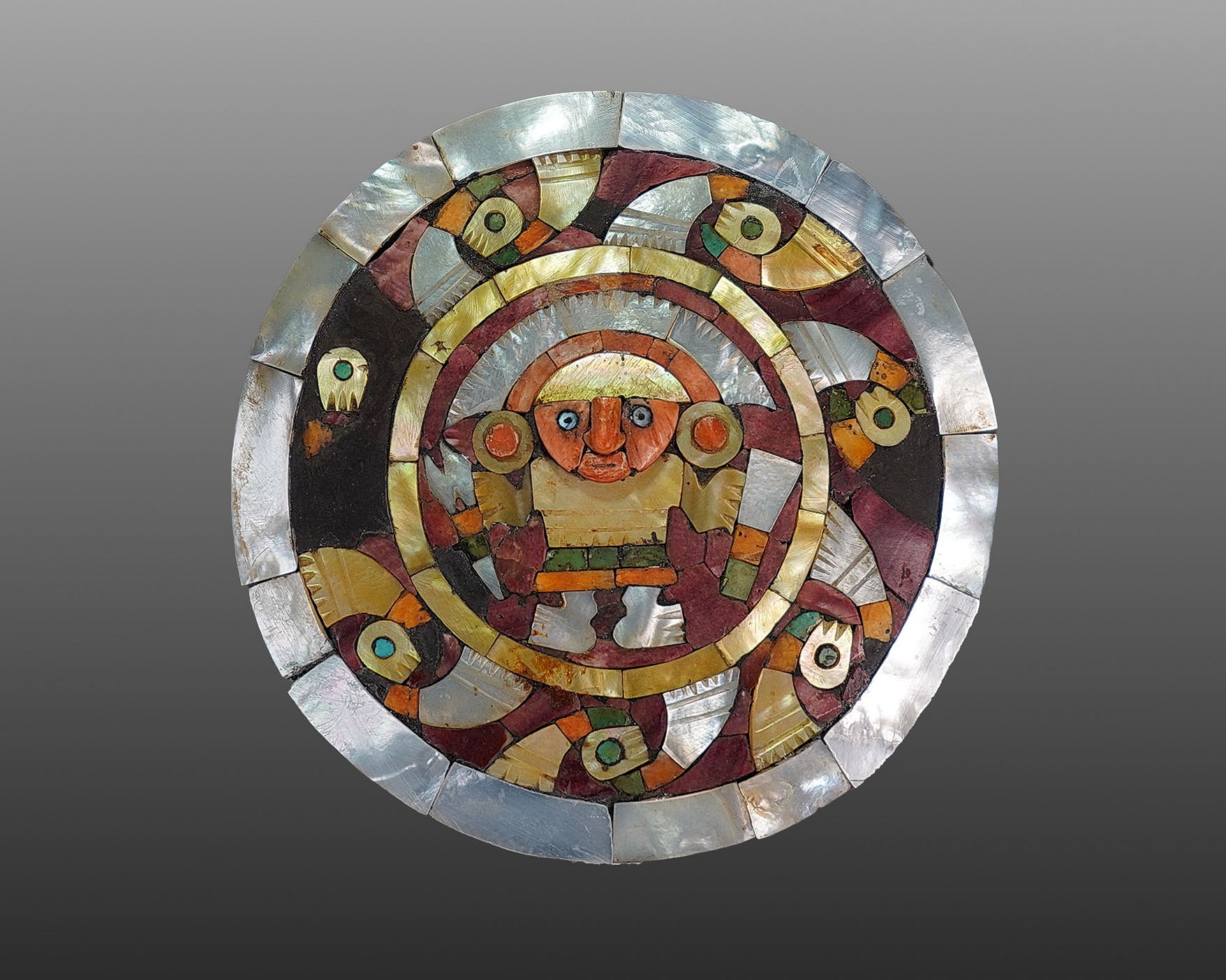



Peru, Chimú Wood Earspool with Inlaid Shell Deity
The Chimú were renowned for their sophisticated craftsmanship. This North coast Chimú earspool features a male ruler wearing an elaborate semi-circular headdress and holding a scepter in each hand, portraying power. The earspool is particularly large and decorated with cut inlays of varying shades of spondylus and mother-of- pearl shells. Highlights of turquoise and purple shells embellish the design. The mosaic is laid out of a thin layer of a dark resin material set on a circular wood back, which is attached to a tapering wood shaft. The outer edge of the mosaic is adorned with series of wave motifs, connecting representing the Chimú marine environment. The larger ear ornaments were worn by high-ranking personage. The more important the person, the larger the ear pool. This earspool likely belonged to a male nobleman with a high degree of power and authority. A very similar ear ornament is illustrated on the front cover of Alt-Peru: Auf den Spuren der Zivilisation (Old Peru: On the Trail of Civilization), published in 1986 by the Roemer Museum in Vienna.
Media: Shell
$15,000
p4200
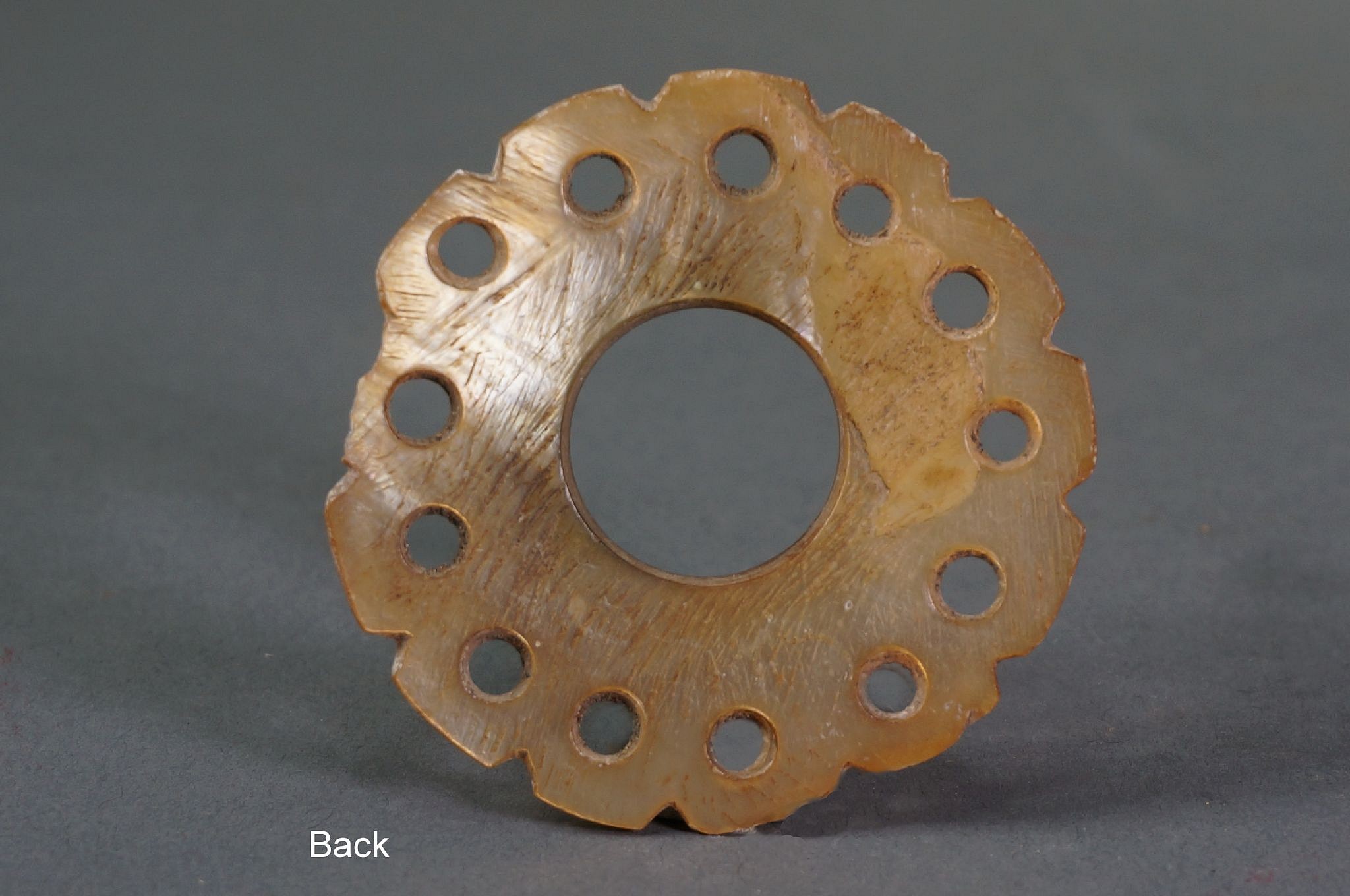


Peru, Early Middle Horizon Mother of Pearl Round Ear Spool Front with 13 Petals
This is a very large piece for a mother of pearl carving and must have come from a very large shell. The 13 petal incised design does not represent a specific flower, but instead is an abstract form depicting a floral shape. The center hole with incised ring is typical of Late Chavin/Early Moche iconography.
Media: Shell
Dimensions: Diameter: 2"
Price Upon Request
m7118
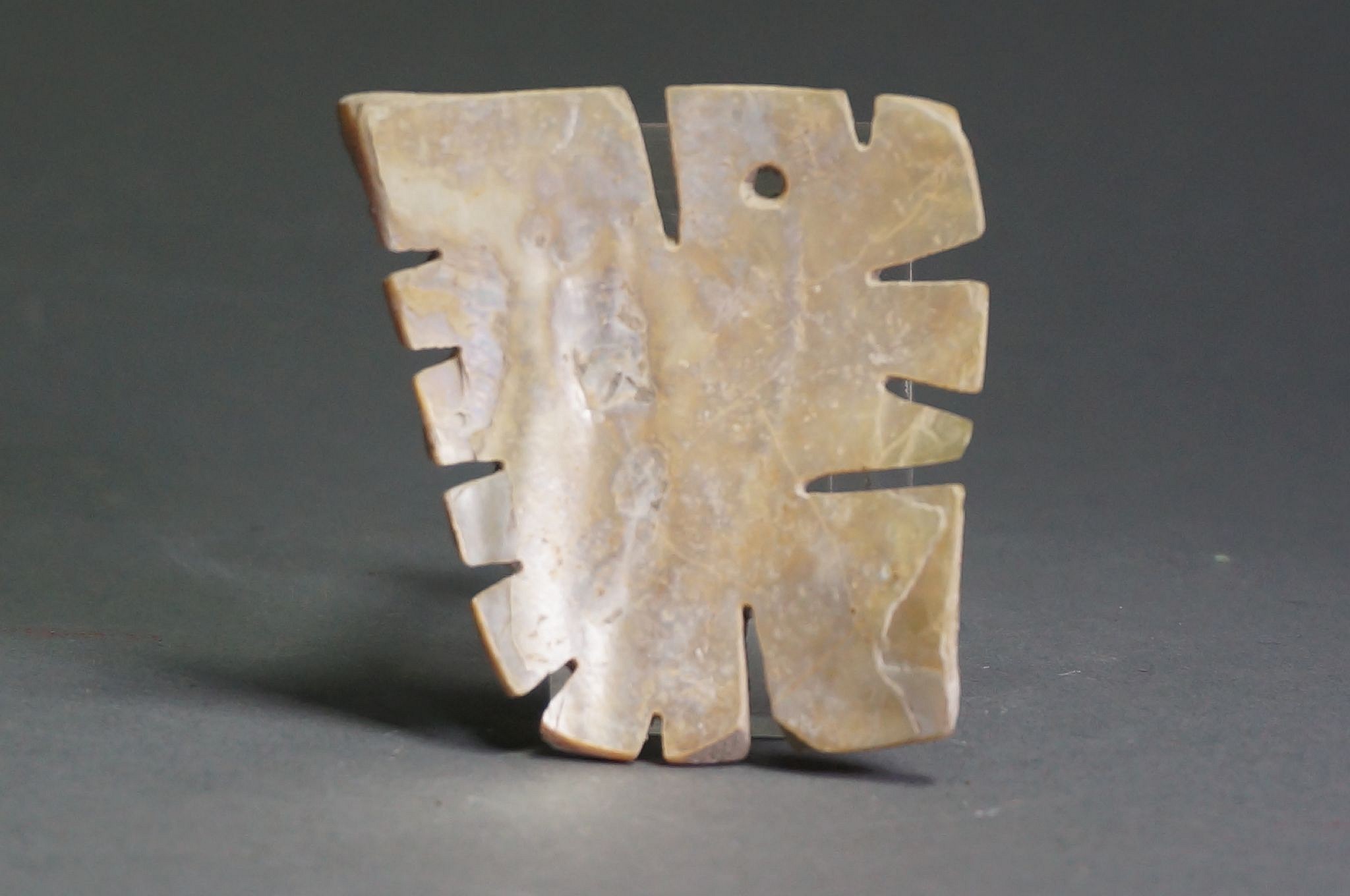






Ecuador, Guangala Carved Mother of Pearl Eagle
This exquisitely carved mother of pearl (Pinctada mazatlanica) ornament is abstract but retains a distinct ornithomorphic character of a bird in profile. It could be a harpy eagle which were important deities in Andean mythology. The suspension hole also serves as the bird’s eye, and the reverse side still has the remains of the shell's original. Considerably coveted as prestigious items by neighboring cultures, shells were found in abundance in the warm waters of coastal Ecuador and were essential to the economic development of coastal Pre-Columbian Ecuadoran trade. A similar zoomorphic example is illustrated in Valdez and Veintimilla’s, "Amerindian Signs 5,000 Years of Precolumbian Art in Ecuador," Ediciones Colibiri, Quito, 1992, fig. 63.
Media: Shell
Dimensions: Height: 2" (5cm), Thickness: 3 cm.
$1,800
94303
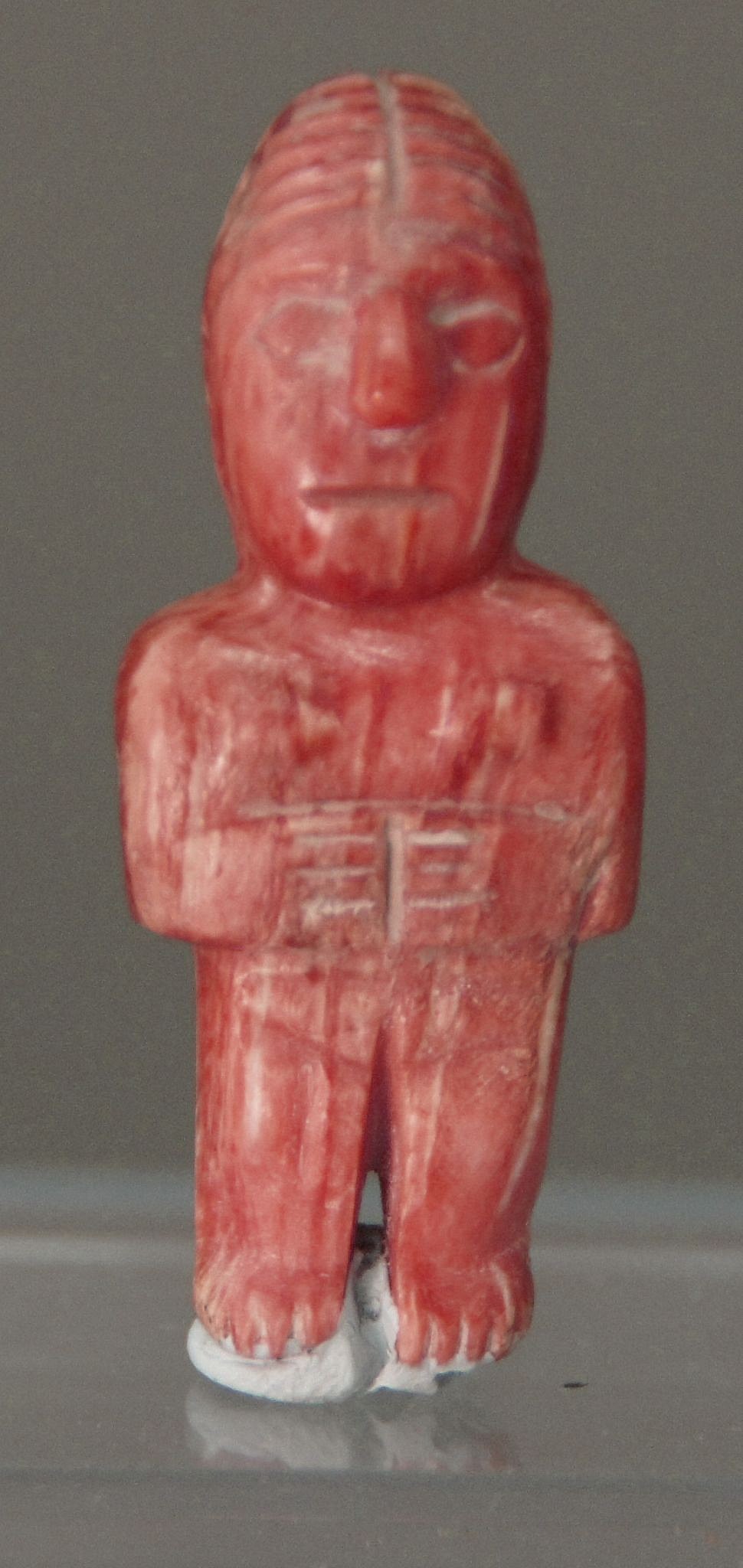


Peru, Inca Carved Spondylus Shell in the Form of a Female
The female is holding her hands to her belly. The shell was carved in such a way that the front of the doll is reddish-orange and the rear is the white part of the Spondylus shell. These carved dolls were placed in burials of young girls as a sacrifice.
Media: Shell
Dimensions: Height 4cm
Price Upon Request
N5048
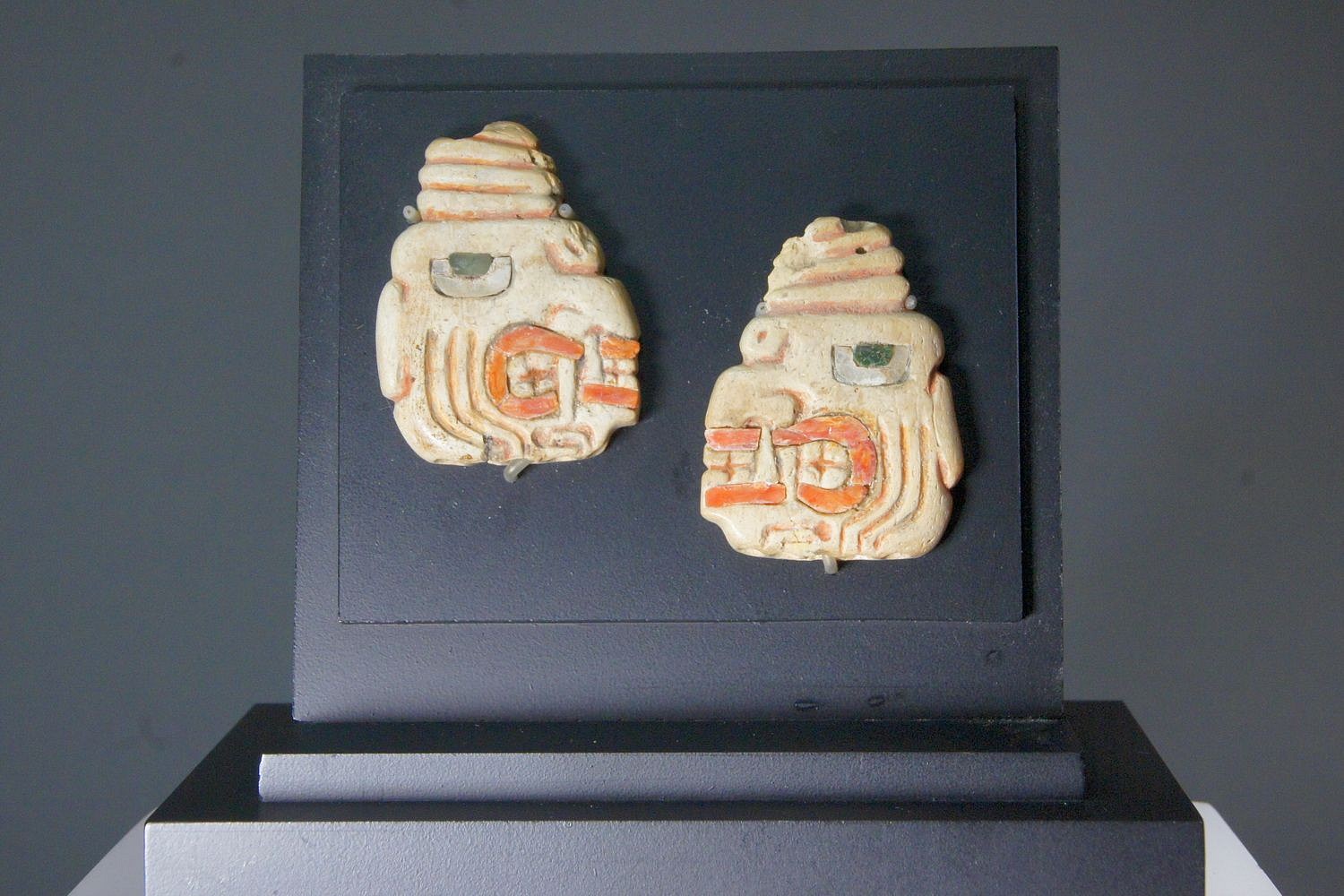


Peru, Pair of Chavi n Shell Ear Pendants with Fanged Deity Heads Wearing Turbans
This pair of ear pendants inlaid eyes with shell and turquoise pupils. The teeth are also inlaid with shell. Both profiles wear knotted turbans. The faces are similar to the large stone tenoned heads found at ChavÃn de Huantar. A similar pair can be found in the "Handbook of South American Indians," Volume II, Julian H. Steward, ed. (1963: pl. 62).
Media: Shell
Dimensions: Height 1 3/4" x Width 1 1/2"
$7,500
97137
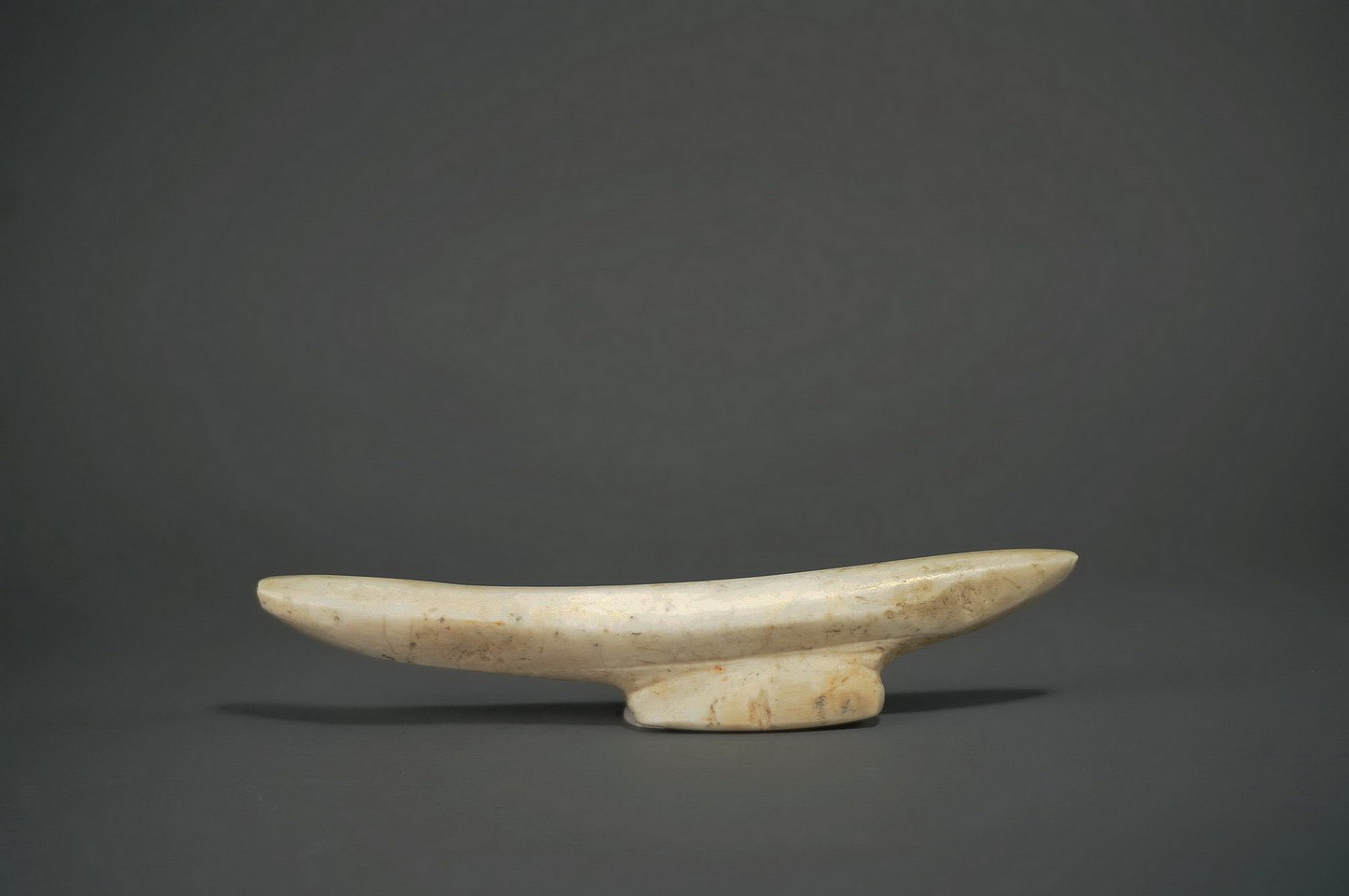






Dominican Republic, Shell Dagger from the Estate of Fred Olsen
This dagger is illustrated in ON THE TRAIL OF THE ARAWAKS by Fred Olsen, p.192. Olsen explains that "repeated handling shows that the object best fits the hand as a dagger, with the index finger placed over the protuberance to guide a powerful down stroke." He also states that it was cut from the lip of a conch shell and finished with a sharp point. The dagger resembles the form of an abstract animal, likely the anteater (Tamandua T. tetradactyla), which is found on Antigua. Fred Olsen collection, by descent to his grandson prior to 1967.
Media: Shell
Dimensions: Length: 9"
$5,750
n9028
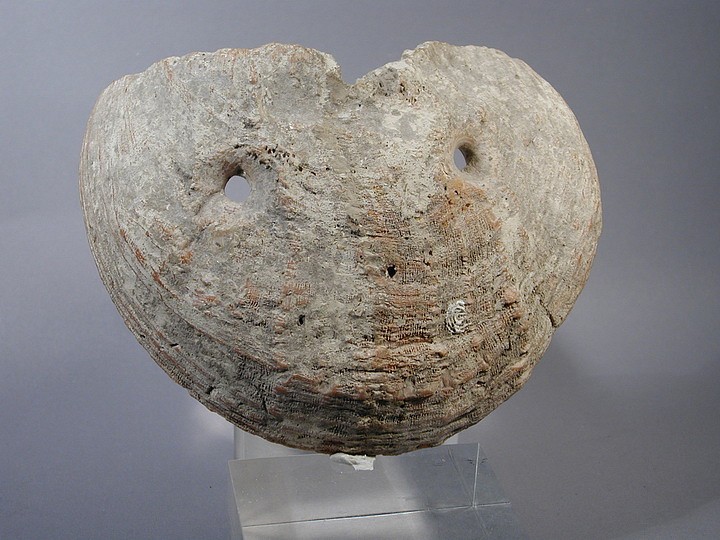


Ecuador, Shell Mask
This spondylus shell pectoral has been ground down to remove the exterior spines. Two drilled eye holes suggest eyes in a mask. This object is striking for its graphic simplicity, which never abandons the essential beauty of its primordial organic form: Spondylus princeps. Spondylus princeps are only found in the tropical north Pacific between the Gulf of California in Mexico and Ecuador’s Gulf of Guayaquil. Grave goods made from these shells have been found along the Andean coastline as far south as Chile. These goods are evidence of both regional exchange and long-distance trade. Spondylus shells from the north were traded for luxury items such as turquoise and lapis lazuli from the southern shores of Chile. The red rim of the spondylus shell was an especially valued material and was often cut away from the shell to be used in the production of other objects. Finely worked artifacts of organic origins are rarely preserved intact. A similar example is illustrated in Ancient Ecuador: Culture, Clay, and Creativity 3000-300 BC published by the Field Museum of Natural History, Chicago, 1975.
Media: Shell
Dimensions: Diameter: 5 3/4"
$2,500
94227
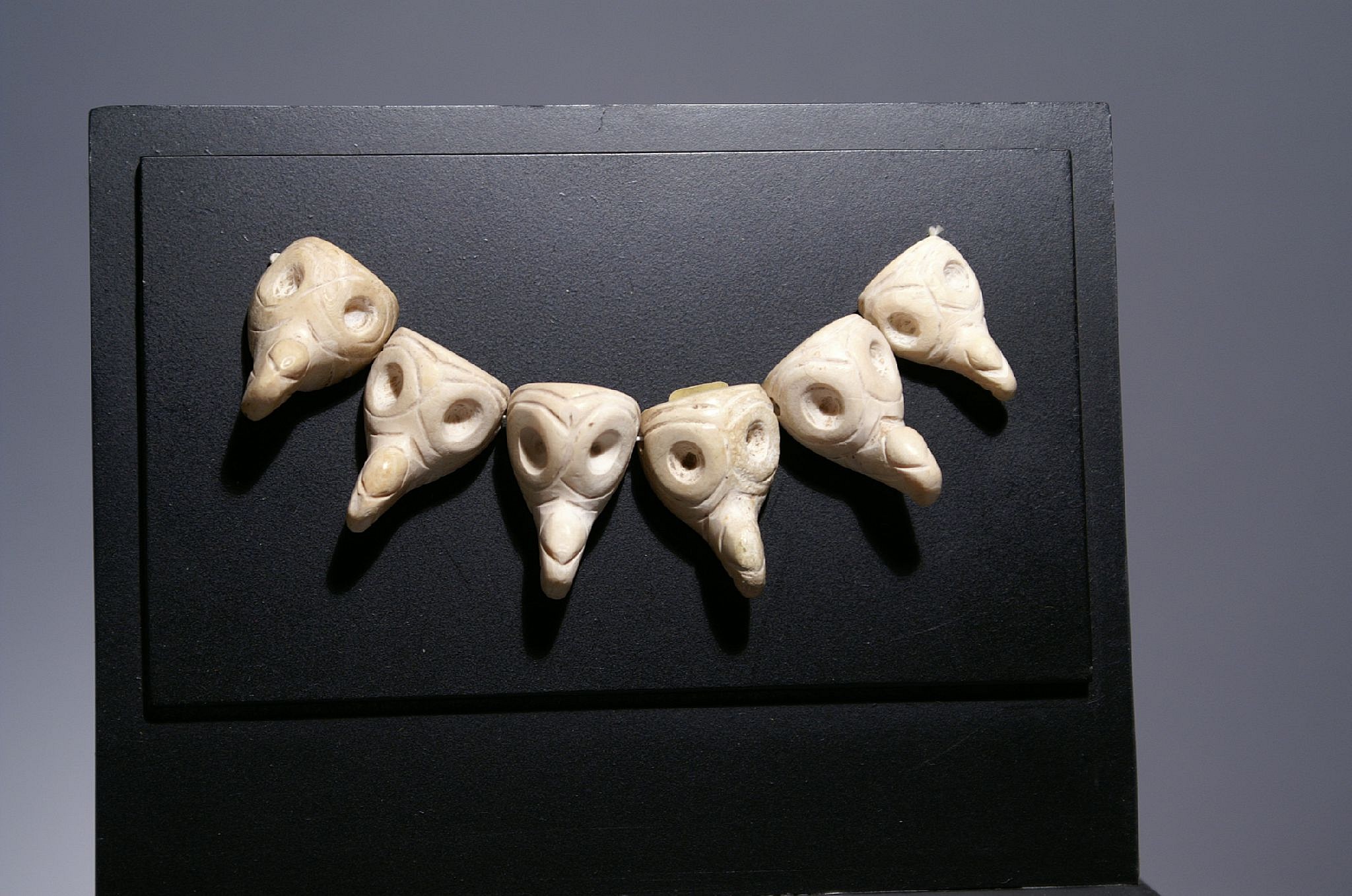


Mexico, Six Huastec Carved Shells in the Form of Condor Heads
These raptorial bird heads were clearly a part of the same original necklace. The bird may represent the condor, an endangered species in Mexico, or another powerful raptor that had mythological significance. Each shell head was drilled in the back with two conical drill holes. Colorado collector prior to 1997.
Media: Shell
Dimensions: Length 4 1/2" Each head Length: 1"
Price Upon Request
97162
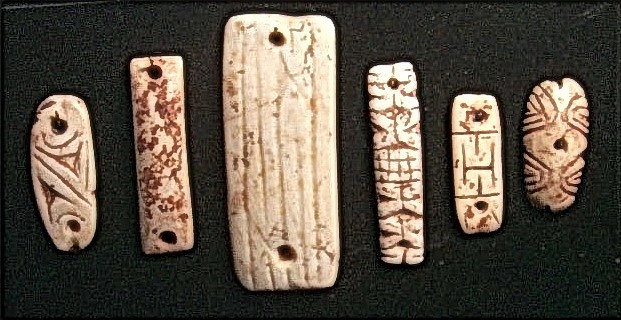
Dominican Republic, Six Taíno Bone and Shell Bracelet Elements
These ornaments have two drilled holes at either end. They were used as either bracelet elements or necklace clasps. It is hard to find shell ornaments with such good patina still intact.
Media: Other
Dimensions: From left: 1 1/4, 1 3/4", 2.5", 1.5", 1 1/4", 1"
$1,200
98372B
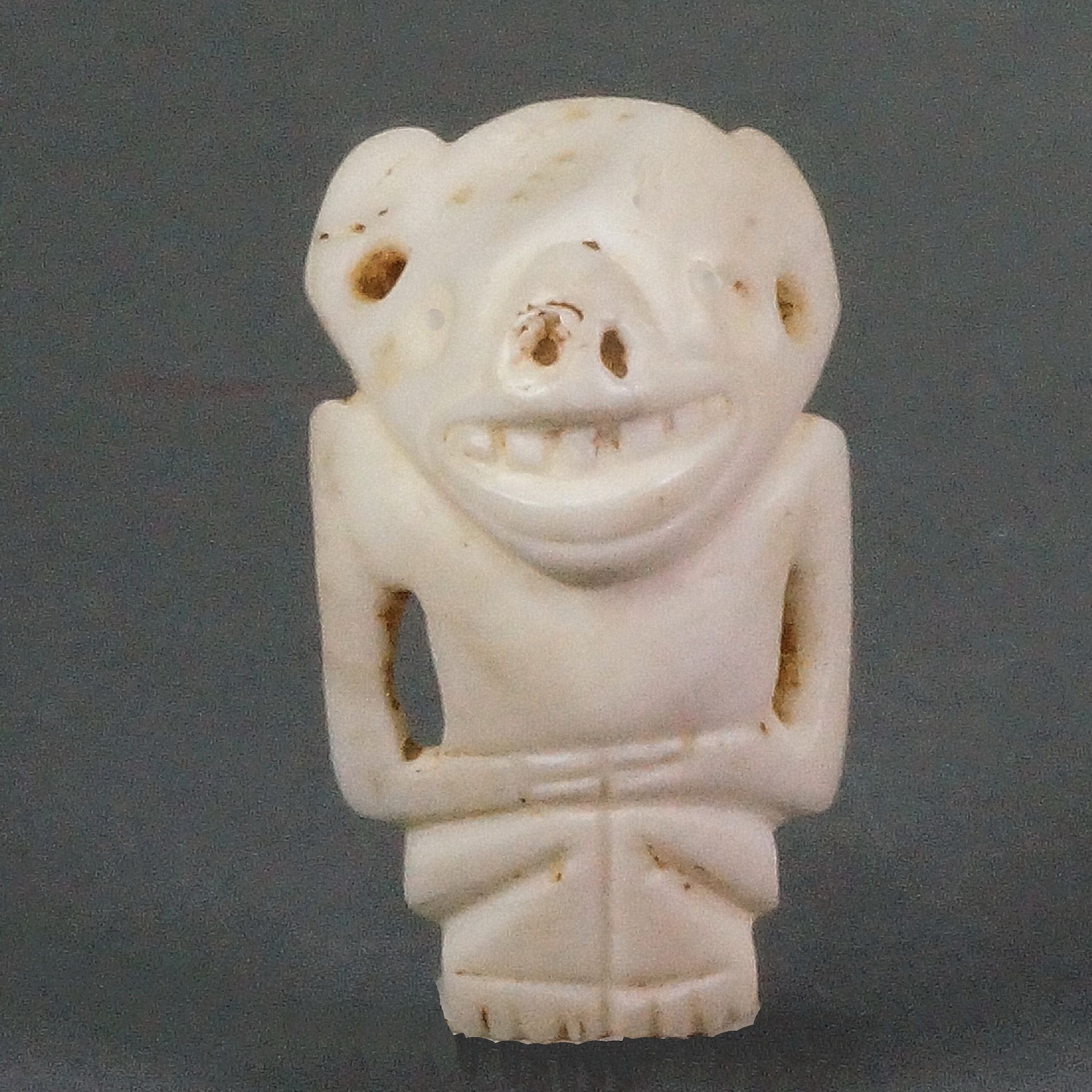
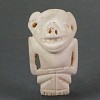
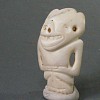
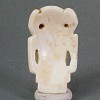
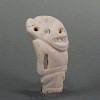
Dominican Republic, Taíno Carved Shell Amulet of a Figure with a Bat Face
This bat deity amulet features a stylized human figure with bat-like features, such as large ears and a pug nose. There are two suspension holes below each ear. This amulet was likely originally the central bead on a larger beaded necklace.
Media: Shell
Dimensions: Height: 1 1/2"
$2,250
98149
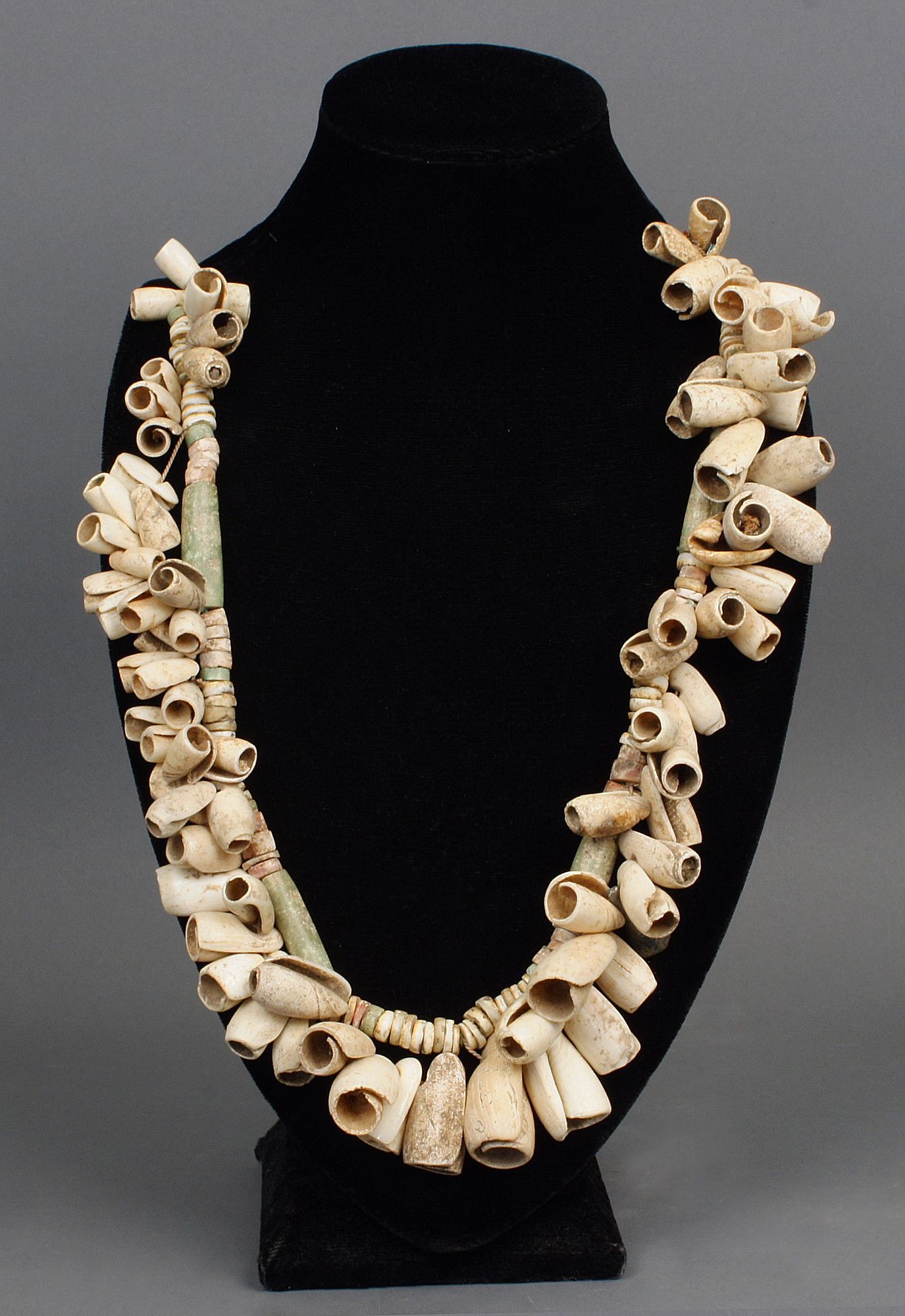
Dominican Republic, Taíno Necklace Composed of Operla Snail Shells
These cone snail (gastropoda Conidae) shells were by the ancient Taíno as beads and would have been worn on necklaces by people of high wealth and status. The beads are ancient, but this necklace is modern assembled, with a design that resembles an ancient necklace.
Media: Shell
Dimensions: Length: 21"
$3,500
99376
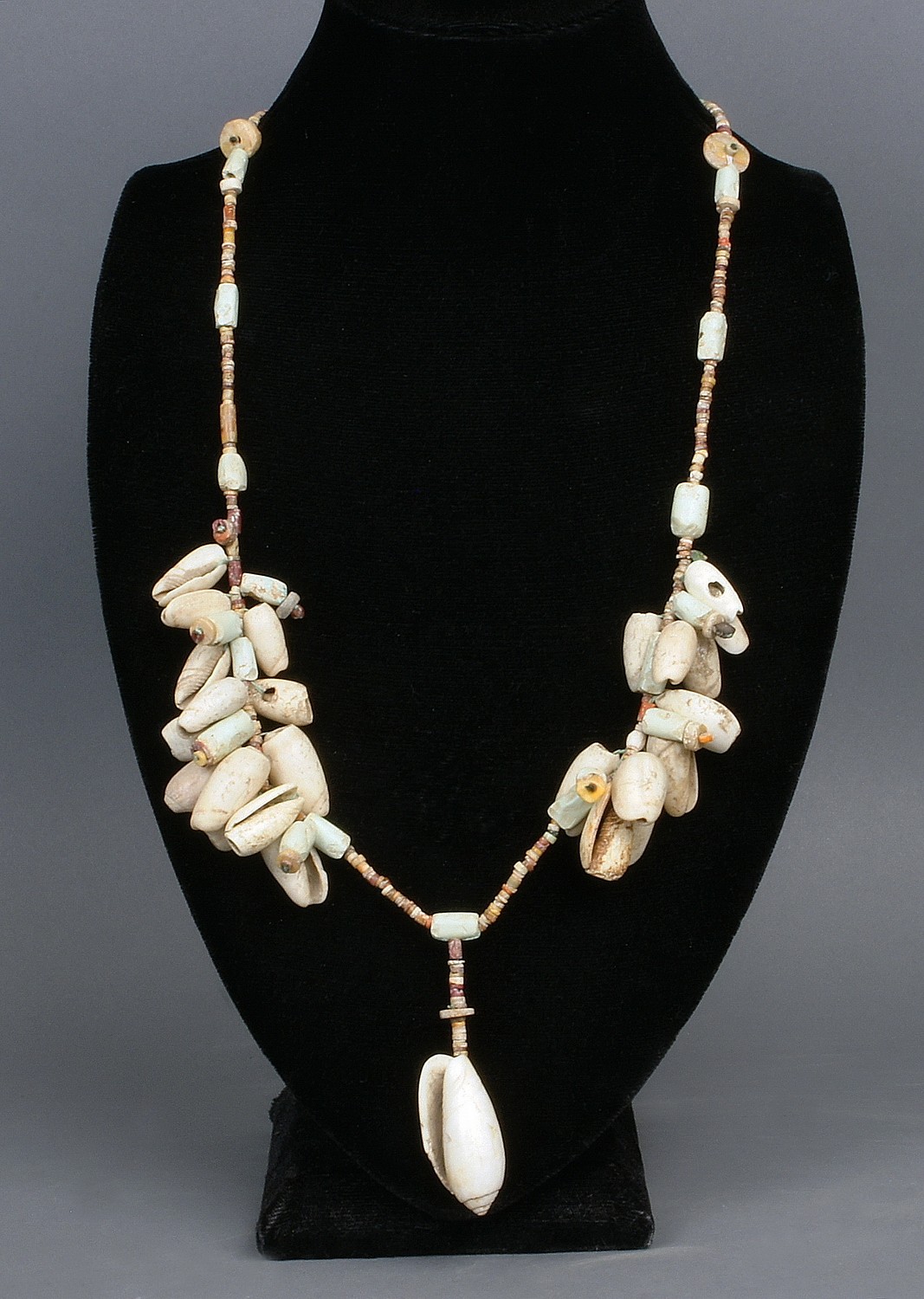
Dominican Republic, Taino Stone and Shell Necklace
This necklace has an assortment of stone and shell beads put together to give the viewer a sense of what ancient TaÃno necklaces would have looked like as worn by chiefs. Only chiefs were allowed to wear necklaces of stone beads, which are featured in the creation story as documented by Columbus' missionary, Fra Ramón Pané.
Media: Shell
Dimensions: Length: 28"
$1,800
99375
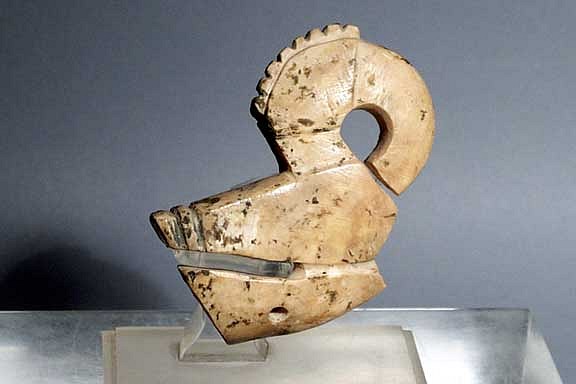


Colombia, Tairona Shell Macaw
Carved from a very thick shell with a hole in the base indicating that it was used as a finial for a staff. The bird has a large round beak indicating that it is a Macaw. Complete and intact. It is unusual for shell artifacts from Colombia to last so long.
Media: Shell
Dimensions: Height 2 1/4"
$1,450
88031a
